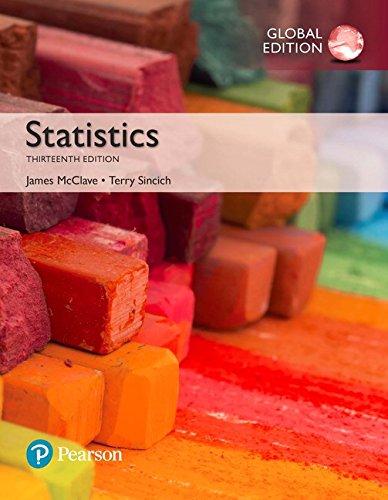Accuracy of software effort estimates. Periodically, software engineers must provide estimates of their effort in developing new
Question:
Accuracy of software effort estimates. Periodically, software engineers must provide estimates of their effort in developing new software. In the Journal of Empirical Software Engineering (Vol. 9, 2004), multiple regression was used to predict the accuracy of these effort estimates.
The dependent variable, defined as the relative error in estimating effort, y = 1Actual effort - Estimated effort2 > 1Actual effort2 was determined for each in a sample of n = 49 software development tasks. Eight independent variables were evaluated as potential predictors of relative error using stepwise regression. Each of these was formulated as a dummy variable, as shown in the table.
Company role of estimator: x1 = 1 if developer, 0 if project leader Task complexity: x2 = 1 if low, 0 if medium/high Contract type: x3 = 1 if fixed price, 0 if hourly rate Customer importance: x4 = 1 if high, 0 if low/medium Customer priority: x5 = 1 if time of delivery, 0 if cost or quality Level of knowledge: x6 = 1 if high, 0 if low/medium Participation: x7 = 1 if estimator participates in work, 0 if not Previous accuracy: x8 = 1 if more than 20% accurate, 0 if less than 20% accurate
a. In step 1 of the stepwise regression, how many different one-variable models are fitted to the data?
b. In step 1, the variable x1 is selected as the “best”
one-variable predictor. How is this determined?
c. In step 2 of the stepwise regression, how many different two-variable models (where x1 is one of the variables)
are fitted to the data?
d. The only two variables selected for entry into the stepwise regression model were x1 and x8. The stepwise regression yielded the following prediction equation:
yn = .12 - .28x1 + .27x8 Give a practical interpretation of the b estimates multiplied by x1 and x8.
e. Why should a researcher be wary of using the model, part
d, as the final model for predicting effort (y)?
Step by Step Answer:






